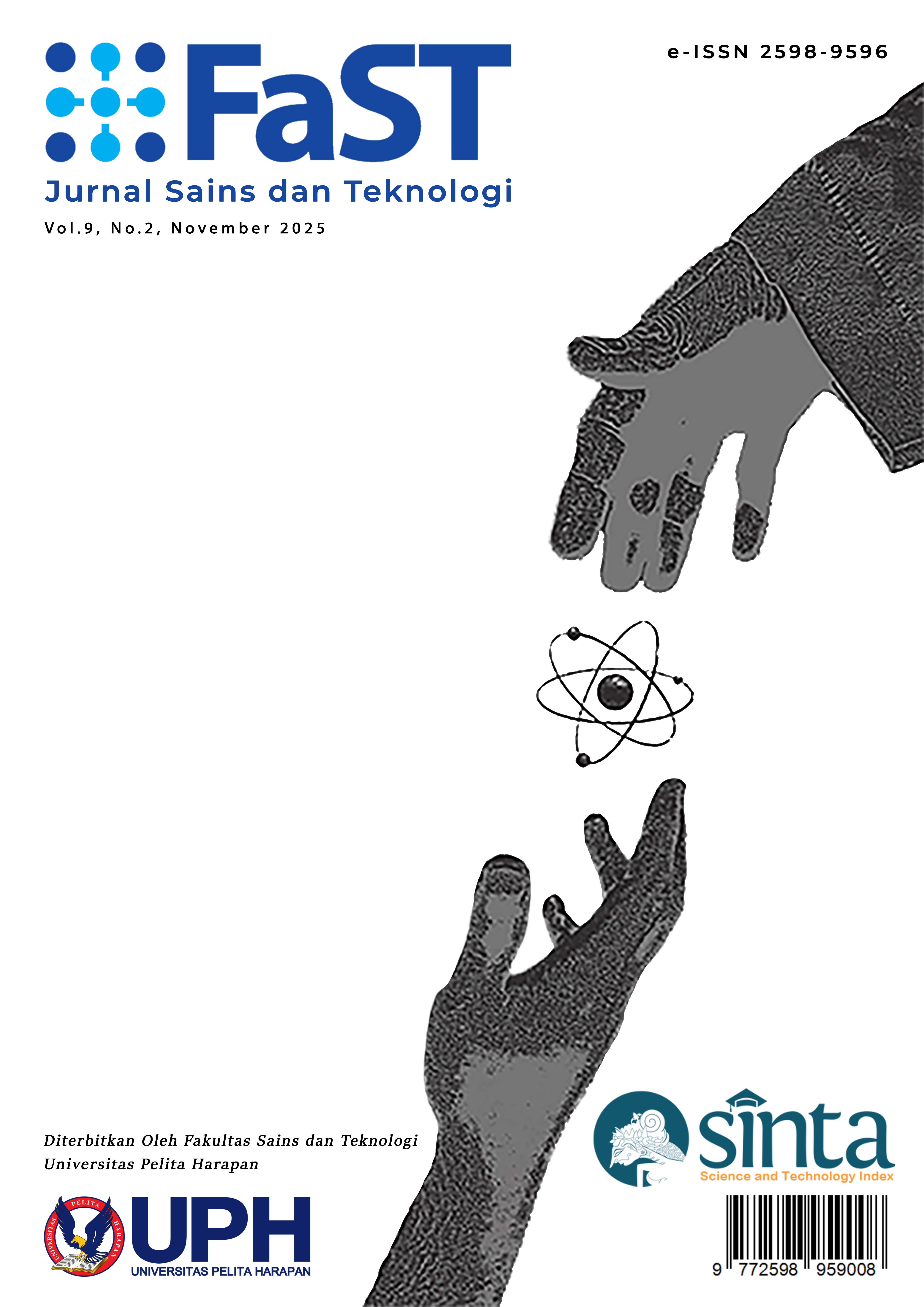The Role of Geopolymer Concrete in Achieving Sustainable Development Goals
DOI:
https://doi.org/10.19166/jstfast.v9i2.10386Keywords:
Cement; Construction; Geopolymer Concrete; Pozzolanic; Sustainable Development GoalsAbstract
A sense of safety and comfort is a fundamental right for all people. The United Nations strives to fulfil this through the establishment of 17 Sustainable Development Goals (SDGs). The construction sector plays a significant role in achieving these goals, particularly in the areas of Good Health and Well-being, Clean Water and Sanitation, Decent Work and Economic Growth, Sustainable Cities and Communities, Responsible Consumption and Production, and Climate Action. One key effort in the construction sector is replacing Portland cement with pozzolanic materials. Cement production emits large amounts of carbon dioxide, contributing substantially to global warming. To address this, pozzolanic materials such as fly ash are used as a substitute for cement in the production of geopolymer concrete. Based on compressive strength tests on cylindrical specimens and flexural strength tests on beam specimens, geopolymer concrete demonstrates high potential for structural applications. Its mechanical performance is comparable to that of conventional concrete, making it a promising alternative that supports sustainable development in the construction industry.
References
Alfathy, R. M., Saputro, S., Sarwanto, & Ramli, M. (2024). Implementation of sustainable development goals in higher education modalities: Literature review. Journal of Turkish Science Education, 21(1), 22–43. https://doi.org/10.36681/tused.2024.002
Arıoğlu Akan, M. Ö., Dhavale, D. G., & Sarkis, J. (2017). Greenhouse gas emissions in the construction industry: An analysis and evaluation of a concrete supply chain. Journal of Cleaner Production, 167, 1195–1207. https://doi.org/10.1016/j.jclepro.2017.07.225
Badan Standardisasi Nasional. (2002). Spesifikasi Bahan Bangunan Bagian A (Bahan Bangunan Bukan Logam) SNI 03-6861.1-2002. BSN.
Benhelal, E., Zahedi, G., Shamsaei, E., & Bahadori, A. (2013). Global strategies and potentials to curb CO2 emissions in cement industry. Journal of Cleaner Production, 51, 142–161. https://doi.org/10.1016/j.jclepro.2012.10.049
Cahyadi, R., Kusumaningrum, D., & Prasetyoputra, P. (2022). Self-supplied water in Indonesia: recent spatial and socio-demographic conditions and its future development. IOP Conference Series: Earth and Environmental Science, 1062(1), 012038. https://doi.org/10.1088/1755-1315/1062/1/012038
China Research and Intelligence. (2024). Indonesia Cement Industry Research Report 2024-2033. In CRI.
Danareksa Research Institute. (2023). Pengelolaan Air Bersih Berkelanjutan.
Fei, W., Opoku, A., Agyekum, K., Oppon, J. A., Ahmed, V., Chen, C., & Lok, K. L. (2021). The Critical Role of the Construction Industry in Achieving the Sustainable Development Goals (SDGs): Delivering Projects for the Common Good. Sustainability, 13(16), 9112. https://doi.org/10.3390/su13169112
Guo, X., Shi, H., & Dick, W. A. (2010). Compressive strength and microstructural characteristics of class C fly ash geopolymer. Cement and Concrete Composites, 32(2), 142–147. https://doi.org/10.1016/j.cemconcomp.2009.11.003
Kementerian Sekretariat Negara Republik Indonesia. (2022). Peraturan Presiden (PERPRES) Nomor 111 Tahun 2022 : Pelaksanaan Pencapaian Tujuan Pembangunan Berkelanjutan.
Mehta, K. (2001). Reducing the Environmental Impact of Concrete. Concrete International, 23, 61–66.
Nielsen, C. V., & Glavind, M. (2007). Danish Experiences with a Decade of Green Concrete. Journal of Advanced Concrete Technology, 5(1), 3–12. https://doi.org/10.3151/jact.5.3
Prayoga, M. B. R., & Afla, R. A. (2023). Utilization of fly ash and bottom ash waste: a study at PLTU tanjung jati B, Jepara, Indonesia. Asean Journal of Toxicology, Environmental, and Occupational Health, 1(1), 9–19.
Ralli, Z. G., & Pantazopoulou, S. J. (2021). State of the art on geopolymer concrete. International Journal of Structural Integrity, 12(4), 511–533. https://doi.org/10.1108/IJSI-05-2020-0050
Rashad, A. M., & Zeedan, S. R. (2011). The effect of activator concentration on the residual strength of alkali-activated fly ash pastes subjected to thermal load. Construction and Building Materials, 25(7), 3098–3107. https://doi.org/10.1016/j.conbuildmat.2010.12.044
Sachs, J. D., Lafortune, G., & Fuller, G. (2024). Sustainable Development Report 2024.
Sachs, J., Schmidt-Traub, G., Kroll, C., Lafortune, G., & Fuller, G. (2019). Sustainable Development Report 2019.
Singh, N. B., & Middendorf, B. (2020). Geopolymers as an alternative to Portland cement: An overview. Construction and Building Materials, 237, 117455. https://doi.org/10.1016/j.conbuildmat.2019.117455
Wibowo, K. A., Christianto, D., & Widjajakusuma, J. (2024). Peningkatan Kuat Tekan pada Beton Geopolimer Akibat Metode Perawatan Dipanaskan. JMTS: Jurnal Mitra Teknik Sipil, 79–86. https://doi.org/10.24912/jmts.v7i1.25150
Widjajakusuma, J., Bali, I., Ng, G. P., & Wibowo, K. A. (2022). An Experimental Study on the Mechanical Properties of Low-Aluminum and Rich-Iron-Calcium Fly Ash-Based Geopolymer Concrete. Advances in Technology Innovation, 7(4), 295–302. https://doi.org/10.46604/aiti.2022.10525
Yu, Q., Li, S., Li, H., Chai, X., Bi, X., Liu, J., & Ohnuki, T. (2019). Synthesis and characterization of Mn-slag based geopolymer for immobilization of Co. Journal of Cleaner Production, 234, 97–104. https://doi.org/10.1016/j.jclepro.2019.06.149
Downloads
Published
Issue
Section
License
Copyright (c) 2025 Jack Widjajakusuma, Aprilio

This work is licensed under a Creative Commons Attribution-ShareAlike 4.0 International License.
“Authors who publish with this journal agree to the following terms:
1) Authors retain copyright and grant the journal right of first publication with the work simultaneously licensed under a Creative Commons Attribution License (CC-BY-SA 4.0) that allows others to share the work with an acknowledgement of the work's authorship and initial publication in this journal.
2) Authors are able to enter into separate, additional contractual arrangements for the non-exclusive distribution of the journal's published version of the work (e.g., post it to an institutional repository or publish it in a book), with an acknowledgement of its initial publication in this journal.
3) Authors are permitted and encouraged to post their work online (e.g., in institutional repositories or on their website). The final published PDF should be used and bibliographic details that credit the publication in this journal should be included.”



